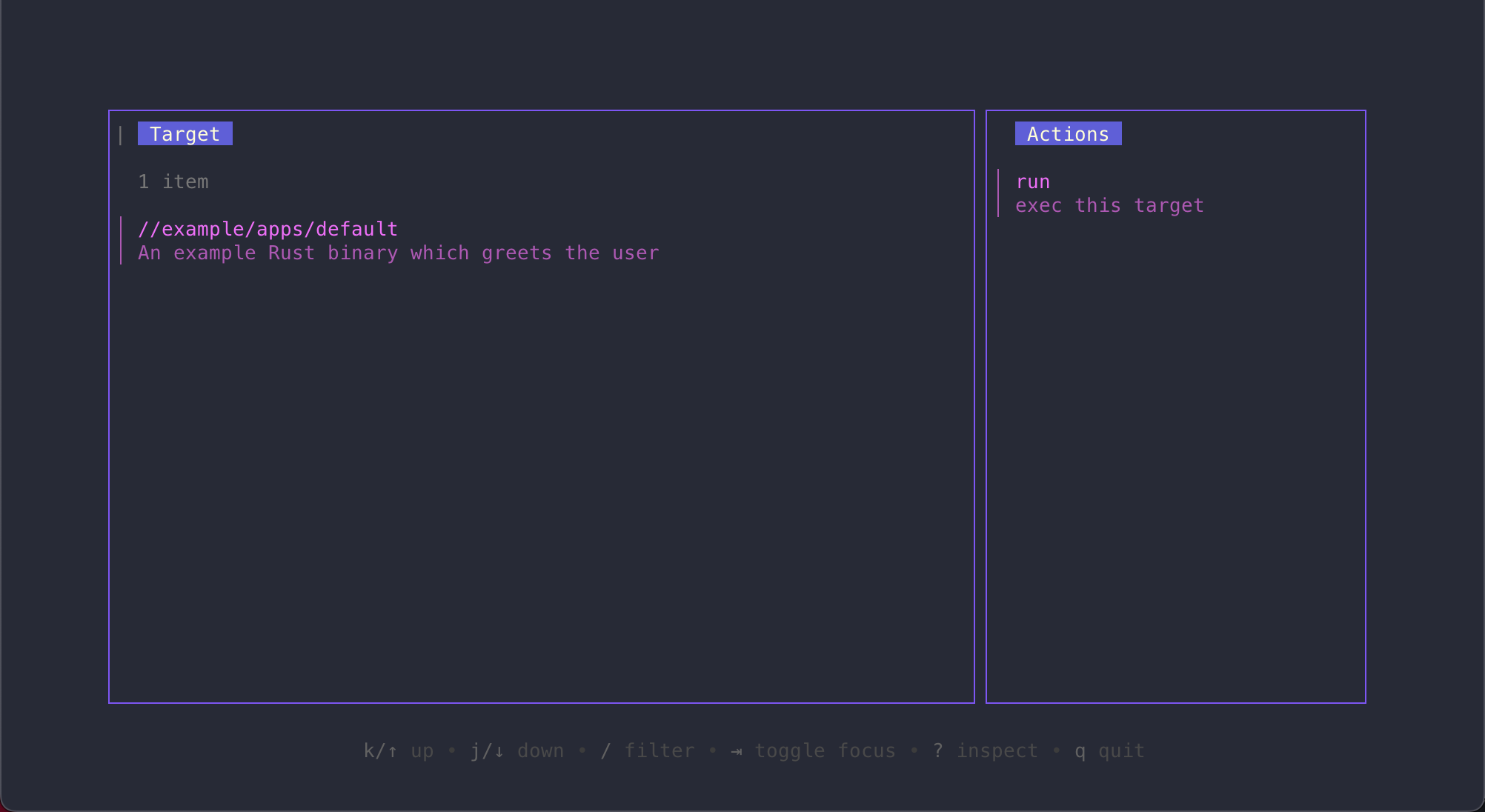The std TUI
There's one final thing we have gained from our work so far. The std framework
ships with a binary that adds a terminal user interface (TUI) to our project.
The quickest way to experiment with it is to enter a nix-shell with the
package installed:
nix shell github:divnix/std
With the std binary now available, we can open the TUI with:
std
For our example repository, we're met with:

What we're seeing here is a graphical view of our project. In this case, we have
a single binary located at //example/apps/default which can be run. How does
std know this? Recall that we informed std that we have runnables located
in apps.nix. When std analyzes our repository, it automatically found the
runnable for our example Rust project and is showing us what we can do with it
(i.e., run it).
This may seem trivial, but that's only because our repository is small. The usefulness of the TUI grows in proportion to the size of our project. As we add more and more pieces to it, the TUI begins to become an entry point for contributors to explore our repository.
In addition to the TUI, the std binary has a CLI counterpart that will show
the structure of the repository:
$ std list
//example/apps/default:run -- An example Rust binary which greets the user: exec this target
If we wanted to run our binary, we'd use:
std //example/apps/default:run